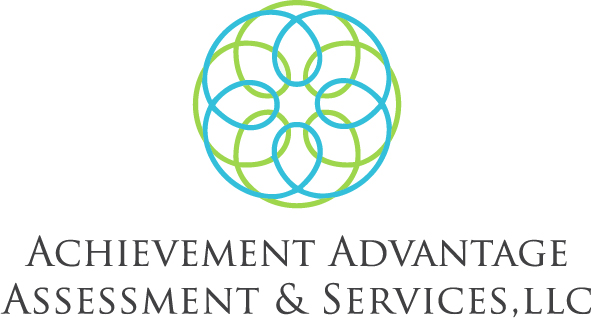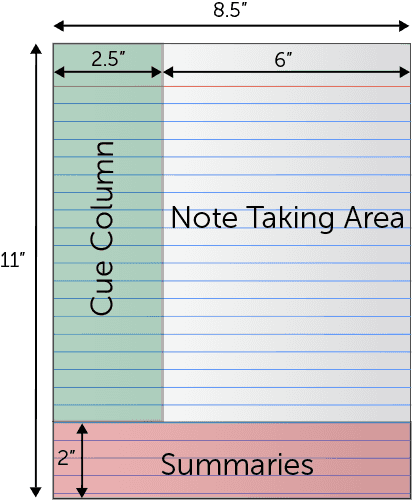Last week, we talked about reading strategies for the college level. Note-taking is also an important skill to use while in class and while studying independently. We suggest taking notes while you read before class and taking notes during lecture. This will provide you with a study guide of the material when it comes time to review. The key to effective note taking is to use a system that organizes information in a way that will be helpful to you and there here are many strategies that can be used to achieve this. Below are two note-taking methods that many students find effective.
The Cornell Note-Taking System. Draw a horizontal line on the bottom of the paper to allow for approximately two inches of space to write a summary. Draw a vertical line approximately two and a half inches from the left side of the paper to be used as a recall margin. The remaining large area on the paper is the note-taking area. Take notes of main ideas, details, important graphs, etc. in the note-taking area, skipping lines between concepts. Write several questions about the main ideas in the left margin to act as a study guide. After learning the material well, write a summary of the material in the bottom area.
Image from: University of Maine Fort Kent
Traditional Outline. You may also choose to make a traditional outline instead. Even if you decide not to use the Cornell Method, it is still helpful to think of questions about the material, study until you are able to answer those questions, and write meaningful summaries of notes. When writing notes while reading, you should use your text to guide how you set up your notes. For example, if your text has headings or sections, it would be helpful to use those headings or sections as headings in your notes.
Main Heading
Subheading
Main Ideas (Important people, Places, Events)
Vocabulary Definitions
No matter which method of note-taking you chose to implement, taking comprehensive notes while reading and in class are essential to your success in a post-secondary environment. Next, we will explore additional study skills that are effective for adult students.


